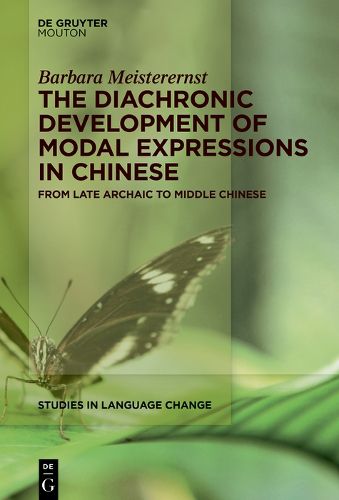Readings Newsletter
Become a Readings Member to make your shopping experience even easier.
Sign in or sign up for free!
You’re not far away from qualifying for FREE standard shipping within Australia
You’ve qualified for FREE standard shipping within Australia
The cart is loading…






The present study is the first to apply a syntactic approach to the grammaticalization of Chinese modals, based on hypotheses on cross-linguistic diachronic developments of modals from lexical to functional categories as upward movement on a functional spine. The temporal framework of the study covers Late Archaic and Middle Chinese. Early Middle Chinese is a crucial turning point for the development of Chinese from a more synthetic to a more analytic language. This change is attributed e.g. to the loss of a former morphology, which also affects the modal system. Against this background, the negative cycle of Chinese, the relevance of polarity contexts, and the development of a new system of deontic, epistemic and future markers are analyzed.
In addition to a comprehensive analysis of the syntactic processes involved in the diachronic changes of the Chinese modal system, the study also provides a comparison with the syntax of grammaticalization of the thoroughly discussed Germanic modals. This constitutes a broad basis for further analyses of the changes in the Chinese language during its long written history, but also for cross-linguistic studies on the syntax of grammaticalization and on linguistic universals.
$9.00 standard shipping within Australia
FREE standard shipping within Australia for orders over $100.00
Express & International shipping calculated at checkout
The present study is the first to apply a syntactic approach to the grammaticalization of Chinese modals, based on hypotheses on cross-linguistic diachronic developments of modals from lexical to functional categories as upward movement on a functional spine. The temporal framework of the study covers Late Archaic and Middle Chinese. Early Middle Chinese is a crucial turning point for the development of Chinese from a more synthetic to a more analytic language. This change is attributed e.g. to the loss of a former morphology, which also affects the modal system. Against this background, the negative cycle of Chinese, the relevance of polarity contexts, and the development of a new system of deontic, epistemic and future markers are analyzed.
In addition to a comprehensive analysis of the syntactic processes involved in the diachronic changes of the Chinese modal system, the study also provides a comparison with the syntax of grammaticalization of the thoroughly discussed Germanic modals. This constitutes a broad basis for further analyses of the changes in the Chinese language during its long written history, but also for cross-linguistic studies on the syntax of grammaticalization and on linguistic universals.